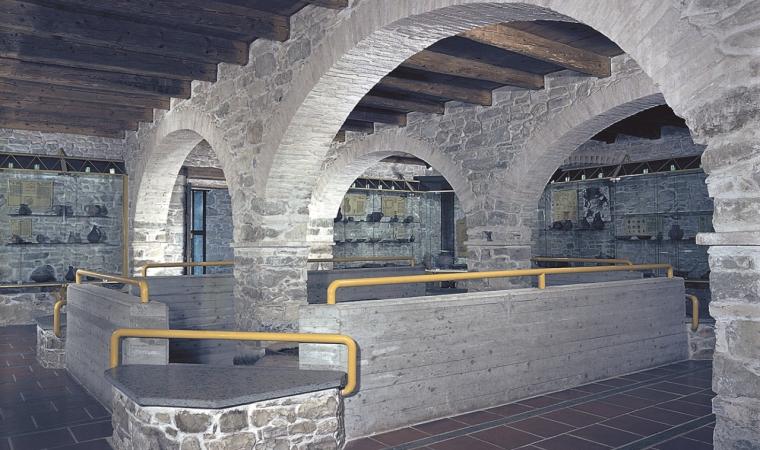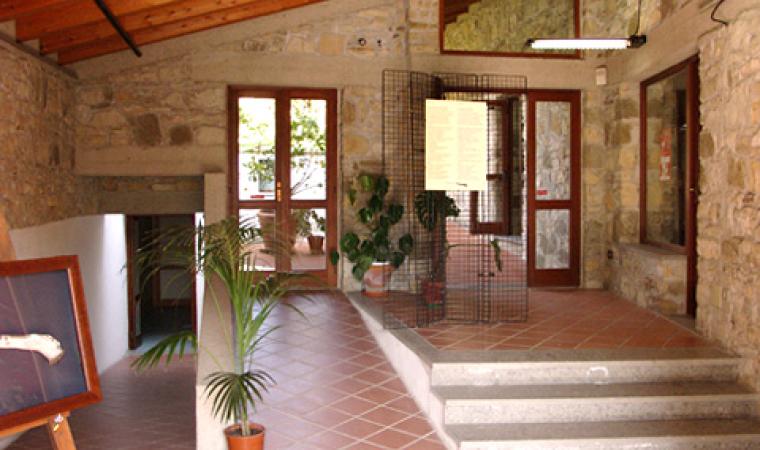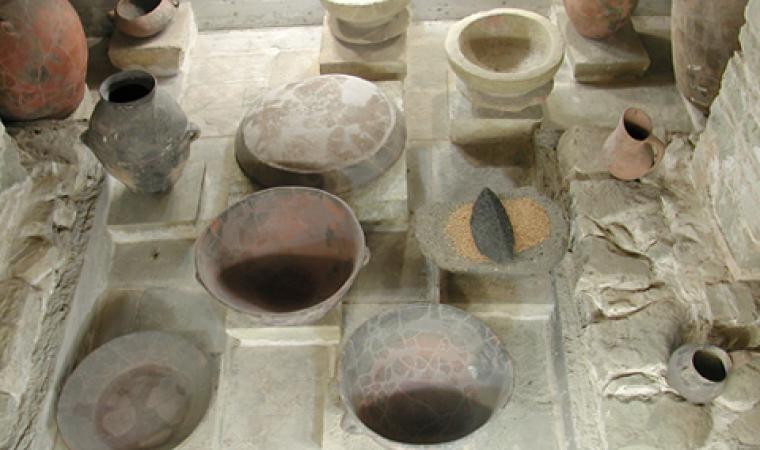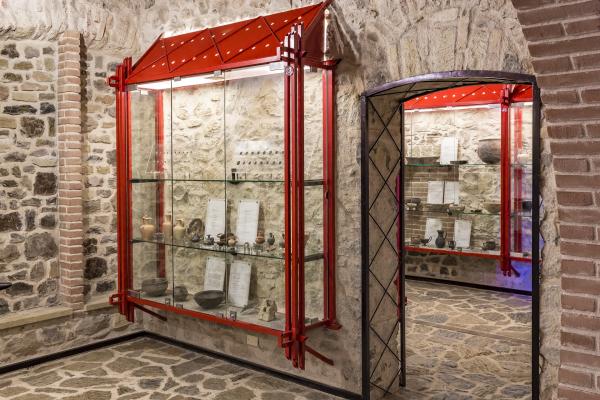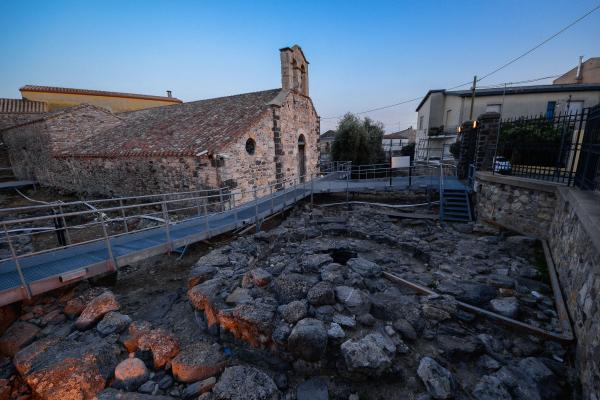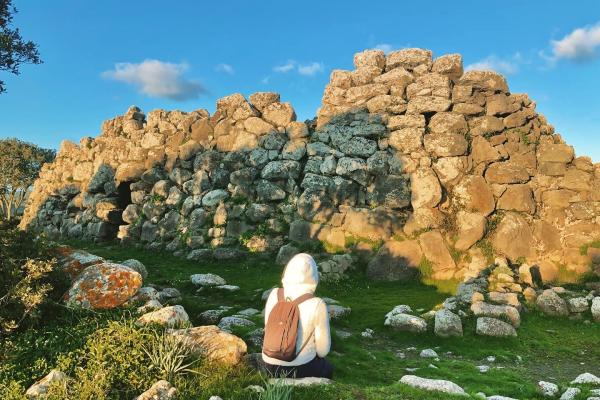Over 400 metres high, in the setting of a wooded park, fragrant with Mediterranean essences, it dominates the entire subregion of Marmilla: the view stretches all the way to the Gulf of Oristano to the west and to Cagliari, 50 kilometres away, to the south. The Nuragic complex of Genna Maria stands on a hill, watching over the territory, one kilometre from Villanovaforru, a village that was founded under Spanish domination and became famous after its discovery in the middle of the twentieth century. It is a Nuraghe with a complex structure: originally, in the 15th century BC, a central fortified tower (two metres tall) with an inner room, was surrounded by a bastion with three large towers joined by thick walls, which still enclose a courtyard with a well partly dug out of the rock. In a second phase, at the beginning of the Late Bronze Age (13th century BC), the tower was enclosed and partially surrounded by a bastion with four towers that had slits in them. In turn, the quadrilobed rampart, the function of which was presumably defensive, was enclosed (11th century BC) by sturdy city walls with six corner-towers.

Nuragic or pre-Nuragic archaeology
An imposing monument dating back 3500 years has brought a certain prestige to Villanovaforru: it is located in Marmilla, an area filled with evidence of the Nuragic period, in the central-southern part of Sardinia
An imposing monument dating back 3500 years has brought a certain prestige to Villanovaforru: it is located in Marmilla, an area filled with evidence of the Nuragic period, in the central-southern part of Sardinia
See this place because...
You will discover the daily life and evolution of the Nuragic civilization in one of the most important monuments from prehistoric times in Sardinian, flanked by a captivating museum
Pictures and videos
You may also like
More attractions in the vicinity
Nearby hotels and accommodations

VILLANOVAFORRU
1 km

VILLANOVAFORRU
1 km

VILLANOVAFORRU
1 km


